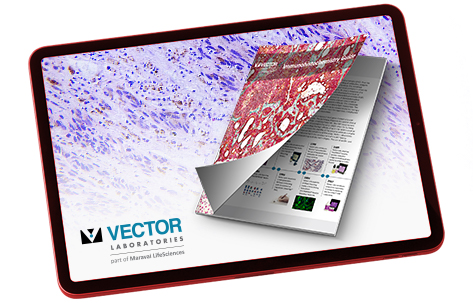Making IHC as Simple as ABC
A guide for optimizing immunohistochemistry protocols
Researchers use immunohistochemistry (IHC) to detect protein antigens in tissue sections or cell preparations. IHC is a powerful tool that provides insights into protein-gene relationships, spatial interactions, physiological tissue structures, and biomarker identification for a wide variety of applications, ranging from basic research to the assessment of disease states in humans and animals.
In IHC, detection antibodies bind targeted antigens of interest. These antibodies are then visualized using either chromogenic or fluorescence signal detection. In chromogenic detection, the detection antibody is conjugated to an enzyme that catalyzes the conversion of its respective chromogen to a colored precipitate at the site of the antigen, allowing for brightfield microscopy visualization. While fundamentally straightforward, IHC is highly customizable, and many options exist for improving signal quality and accuracy.
Download this guide from Vector Laboratories to learn how to get the most out of IHC.
- Tips and tricks for labeling multiple antigens simultaneously
- How to select secondary and tertiary detection reagents
- The difference between avidin-biotin based detection and polymer-based detection


